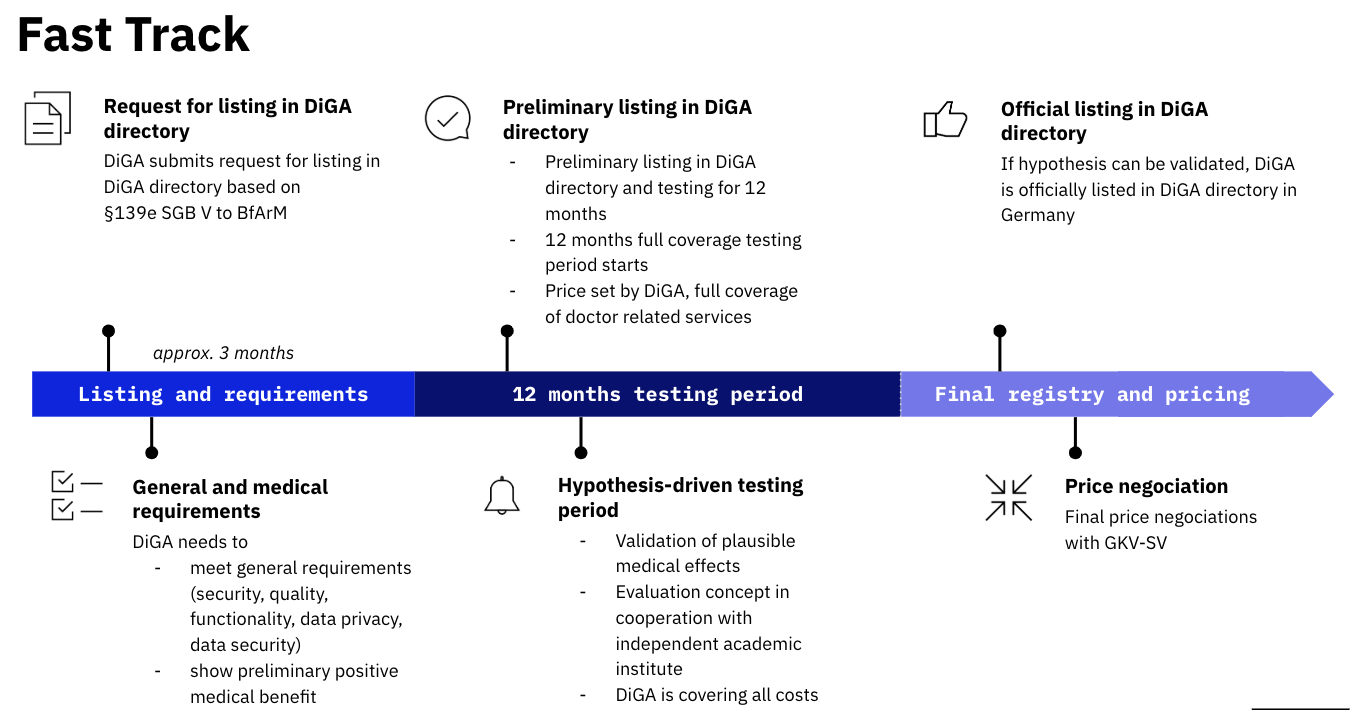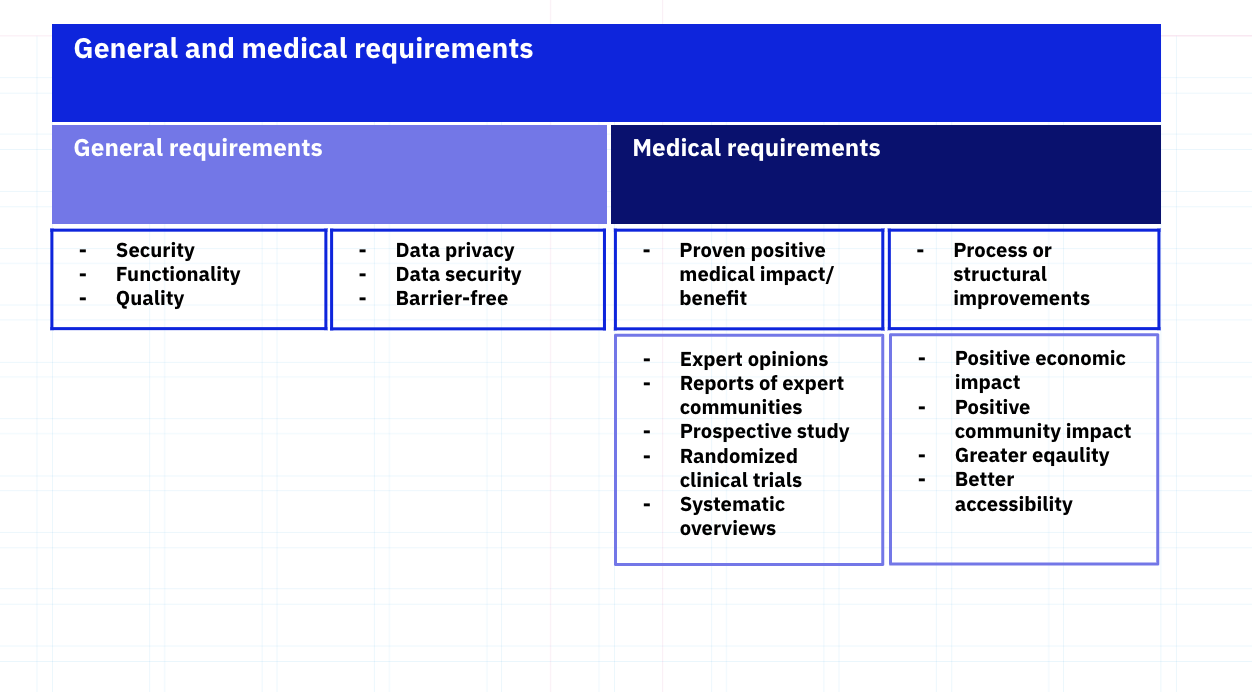By Nina Jetter
After years of stagnation and little innovation, the regulatory environment in Germany finally is changing. The German Parliament passed the “Digital Care Act” (DVG) on November 7th 2019, clearing the way to let General Practitioners prescribe digital health applications to any publicly health-insured German citizen. Let’s have a look at the status quo and the expected changes.
What is today’s status quo?
In Germany today digital health applications (Digitale Gesundheitsanwendungen, so called “DiGAs”) often — if at all — are reimbursed as preventive methods or via selective contracts with individual health insurers. This go-to-market strategy was never really scalable, it never gave DiGAs total market access and only a few patients benefited from the services. Entry points into full reimbursement (Regelerstattung) were not really given due to high entry barriers.
Nevertheless, the German market in itself is highly attractive. Public health insurers spent approximately EUR240B for 73M insured patients in 2018 alone. Germany is therefore one of the largest coherent healthcare markets not only in Europe but globally.
With the DVG and the “Fast track” access process, which will come into effect early 2020, the status quo is about to change.
Who is eligible for the new “Fast Track” process?
All digital health applications (DiGAs), which
- are min. CE I and max. CE IIa marked products (based on MDR)
- main functionalities are digital
- support patients mostly in out-patient (ambulant) care for: detection, supervision and treatment
How does the new “Fast Track” look like? (preliminary view)

What are the requirements for digital health applications/ DiGAs?
To show positive medical impact/ benefit and/or process and/or structural improvements in a 12 month period, DiGAs need to move really fast. While general requirements seem to be straight forward, the medical requirements are much more difficult to grasp. Many details however are yet to be defined by the German Ministry of Health. For instance, which level of clinical evaluation (from expert opinions to systematic overviews) a DiGA has to provide. This will likely depend on the DiGA’s CE intended use and its medical benefit and/or process/ structural improvement claim. Randomised clinical trials can take several years, depending on patient recruitment and churn as well as data quality and capturing methods. Also on the process and structural improvement side, there are still no clear KPIs, which DiGAs need to fulfil in order to enter the full reimbursement.

How do people get access to the new digital health application/ DiGA services?
Generally, DiGAs have to be prescribed by doctors. So one important step of the process is that DiGAs inform doctors about their services and the expected benefits for their patients. Germany has 358,000 doctors in single GP practices, hospitals, etc. The best way to reach them is expected to be via associations. 179 medical associations (“Fachgesellschaften”), 30 professional bodies (“Berufsverbände”) and >10 tele clinics might therefore provide a potentially scalable channel for information to reach a critical mass of doctors. This still seems to be a very decisive point. Only if DiGAs win the trust, hearts and minds of GPs, will they be willing to prescribe DiGA services and grant them access to German patients.
Preferably DiGAs provide their patients access to their services via browser-based applications or integrate themselves e.g. into apps of insurer to circumvent the potential data security struggles with the likes of Apple and Google Play Store.
What is better than before? And what is next?
DiGAs will know with certainty after max. 12–24 months if they will be fully reimbursed or not — a road into the market that was not open before.
For the first time, the German Ministry of Health approaches things with a mindset of “fail fast, learn fast and succeed”, which seems to be radical but at the same time needed to break free from slow moving and old patterns. This also resulted in the creation of the health innovation hub in Berlin, with the aim to facilitate the digital transformation of the German healthcare market.